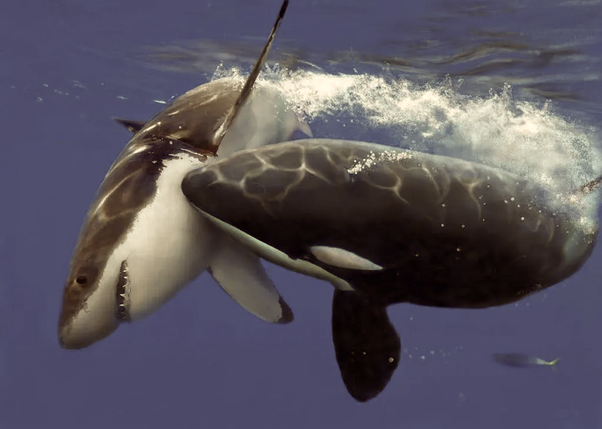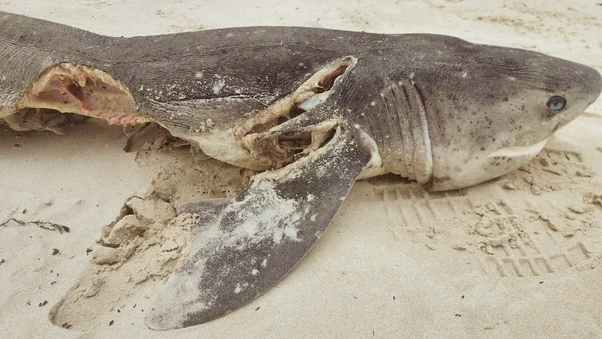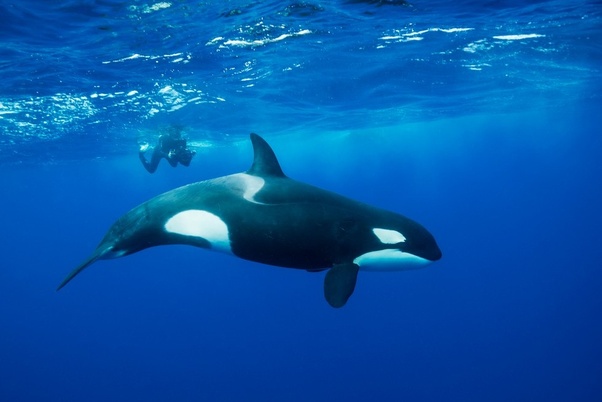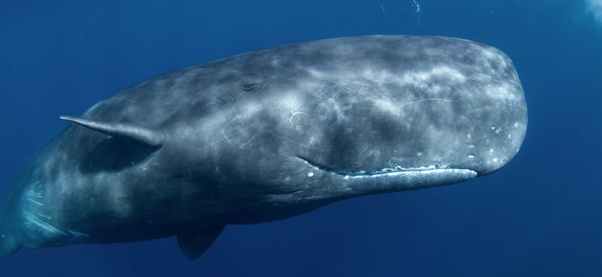Killer whales know a neat trick to immobilize great white sharks — although it must be said that they do not need the trick, nor that they always use it.

If a great white shark — and many other sharks and stingrays, for that matter — is tipped upside down, it enters a state of so-called tonic immobility, which is a form of paralysis that can last up to 15 minutes. Usually it will recover and regain its ability to swim, but if it takes too long, it can possibly suffocate because it can’t move its gils if turned upside down.
And some killer whales know this.
So they turn the shark upside down, and see to it that it suffocates in the end, or that in any case, they eat what they want to eat when the shark is still paralyzed. And that is: the liver, and nothing but the liver.

That’s exactly why so many great whites — and many other sharks, such as the unlucky sevengil shark in the image above — are found liver-less after an encounter with a killer whale pod.
So now you know what to do when you meet a great white shark in open water, dear ladies and gentle men —
Just tip it over and you’ll do just fine.
This is a killer whale.

It can kill anything in the water it pleases. Including great white sharks. But there’s one animal that even pods of orcas will often (though not always) give a wide berth to:

This is a sperm whale. It would wreck a great white’s shit any day of the week and twice on Fridays.
Other extremely large whales are probably simply too big for a great white to mess with, and even if they’re not naturally aggressive, they’re quite capable of defending themselves and could slap the life out of a great white with their tail. But orcas in particular actively hunt great whites.
Because orcas hunt in pods, the great white doesn’t really have a chance. But even individually, an adult orca is massively larger and more powerful that a great white.






